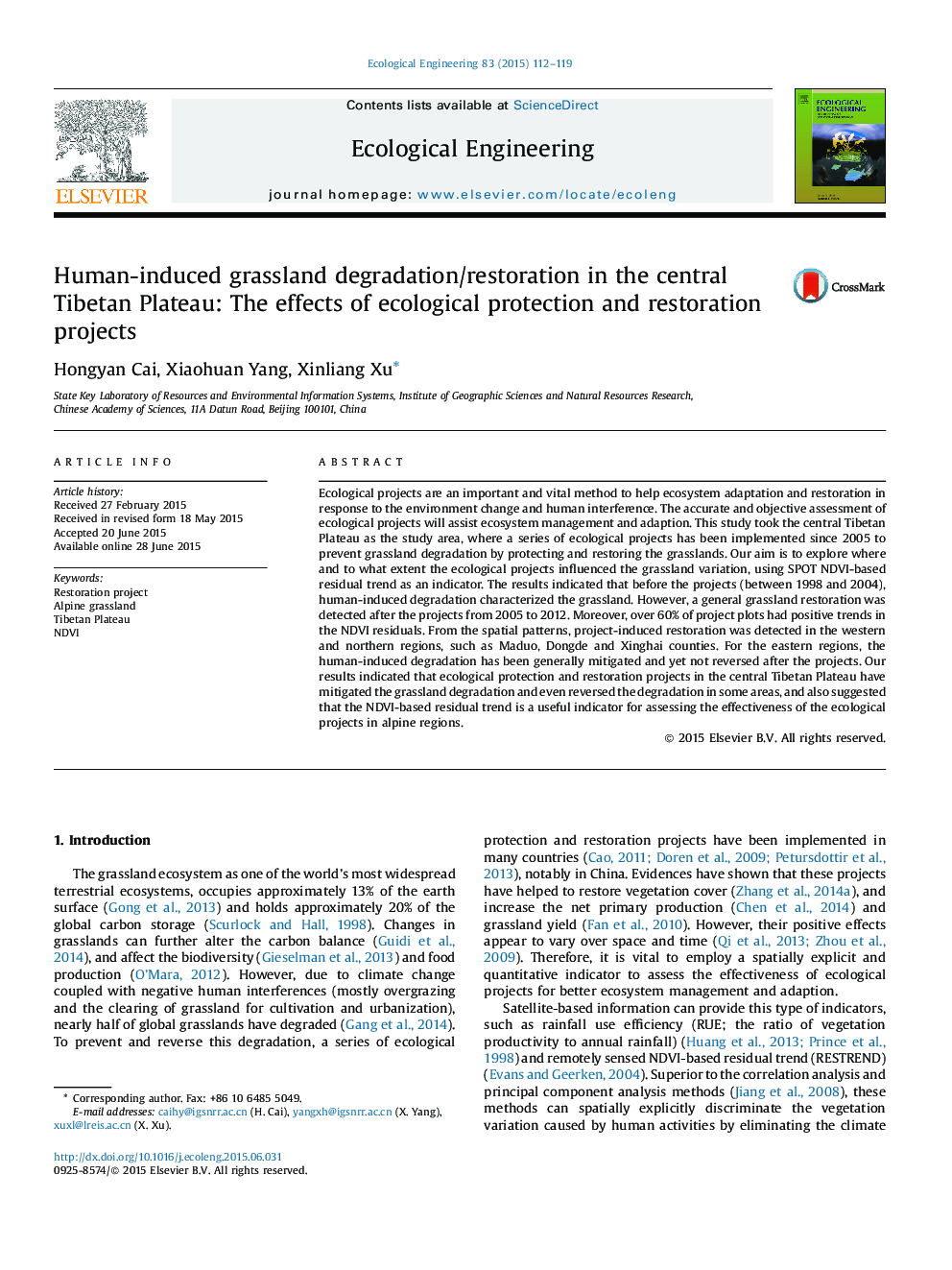| Article ID | Journal | Published Year | Pages | File Type |
|---|---|---|---|---|
| 4388856 | Ecological Engineering | 2015 | 8 Pages |
Ecological projects are an important and vital method to help ecosystem adaptation and restoration in response to the environment change and human interference. The accurate and objective assessment of ecological projects will assist ecosystem management and adaption. This study took the central Tibetan Plateau as the study area, where a series of ecological projects has been implemented since 2005 to prevent grassland degradation by protecting and restoring the grasslands. Our aim is to explore where and to what extent the ecological projects influenced the grassland variation, using SPOT NDVI-based residual trend as an indicator. The results indicated that before the projects (between 1998 and 2004), human-induced degradation characterized the grassland. However, a general grassland restoration was detected after the projects from 2005 to 2012. Moreover, over 60% of project plots had positive trends in the NDVI residuals. From the spatial patterns, project-induced restoration was detected in the western and northern regions, such as Maduo, Dongde and Xinghai counties. For the eastern regions, the human-induced degradation has been generally mitigated and yet not reversed after the projects. Our results indicated that ecological protection and restoration projects in the central Tibetan Plateau have mitigated the grassland degradation and even reversed the degradation in some areas, and also suggested that the NDVI-based residual trend is a useful indicator for assessing the effectiveness of the ecological projects in alpine regions.
